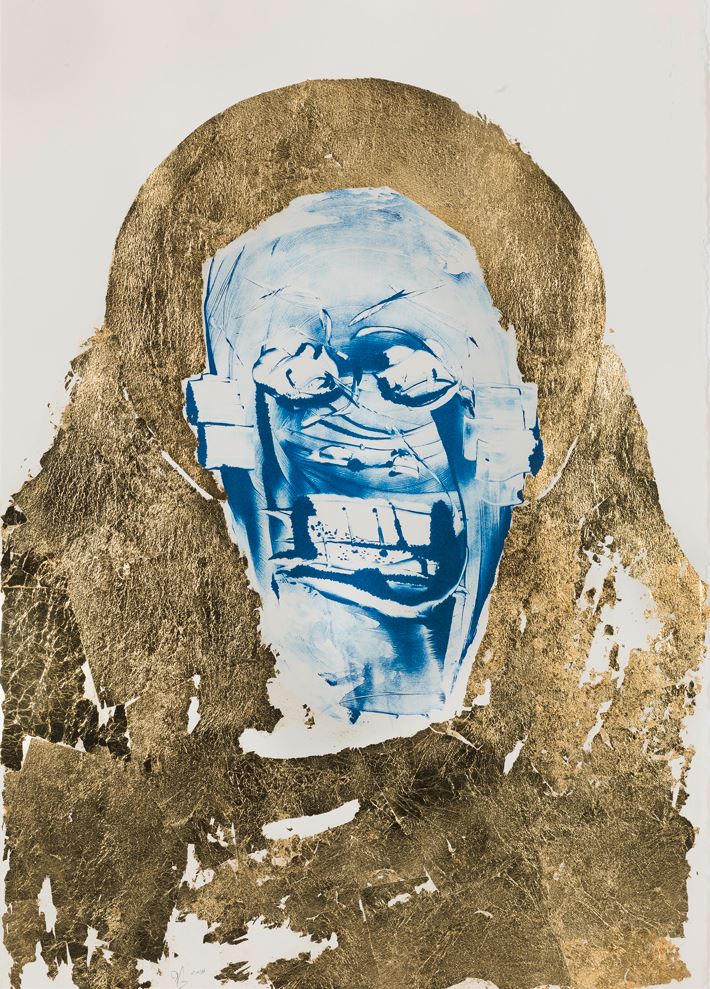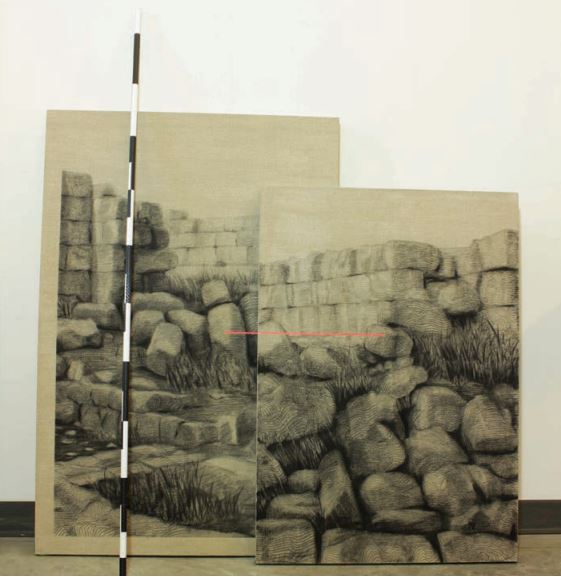Explore how artists in Pour, Tear, Carve: Material Possibilities in the Collection (on view through May 14) use various materials in different ways in their art, and how their choices convey meaning to their work.
Take a look at the works below that incorporate metal and consider:
- • What’s one detail you didn’t notice the first time you looked at each object?
- • What role does the metal play in stimulating the senses?

Valeska Soares, Fainting Couch, 2002, Stainless steel, textile, and flowers, 78 3/4 x 23 1/2 x 13 3/4 in., Gift from the Heather and Tony Podesta Collection, Washington, DC, 2012
Valeska Soares, Fainting Couch, 2002
“I don’t like tricks when it comes to materials. . . . I need to feel that the work is true.”—Valeska Soares
Fainting Couch blends the use of organic (flowers) and inorganic (steel) materials to create an unexpected sensorial experience. Soares harnesses the intrinsic properties of her materials, allowing them to engage with and interact with each other as well as the space that they inhabit. Lie on Soares’s steel couch. How does the steel feel against your back? Can you smell the Stargazer lilies enclosed in the compartment below?

Nicholas Galanin, Let Them Enter Dancing Showing Their Faces: Thief, 2018, Monotype and gold leaf on paper, 30 x 21 in., Director’s Discretionary Fund, 2021
Nicholas Galanin, Let Them Enter Dancing Showing Their Faces: Thief, 2018
This work is drawn from Nicholas Galanin’s 2018 print series with the same name, derived from a Tlingit ancestral entrance dance where the face is revealed, not masked.
The artist views the spontaneity of the printmaking process as “an attempt at capturing cultural memory that is accessed through connections to land, through skinning a deer, through cleaning a salmon—and teaching your children to do all of that. We have these things ingrained in our memory and in our DNA. Whatever that feeling is, it’s not something you can look at, and it’s not something you can hold. But you can feel it, and it comes and goes.”

Alejandro Pintado, Perpendicular Time, 2014, Charcoal and acrylic on canvas with painted metal bar, 51 x 60 in., Director’s Discretionary Fund, 2016
Alejandro Pintado, Perpendicular Time, 2014
Alejandro Pintado uses charcoal on unprimed canvas to depict delicate, pastoral landscapes juxtaposed with geometric forms. The places Pintado convey are both real and imagined, representing scenes from 18th- and 19th-century paintings and engravings. His bold interventions—the strike of red across the canvas and the black-and-white metal bar—serve as a reminder that these places did not occur organically, but were constructed and formed.
